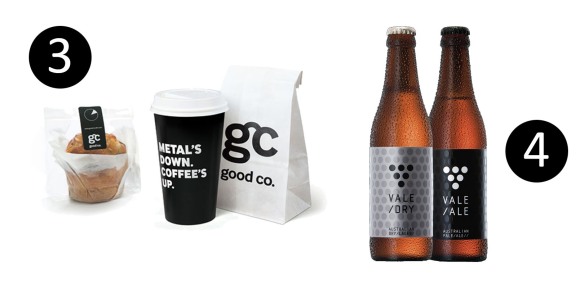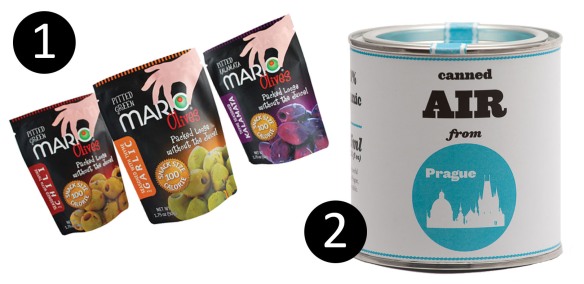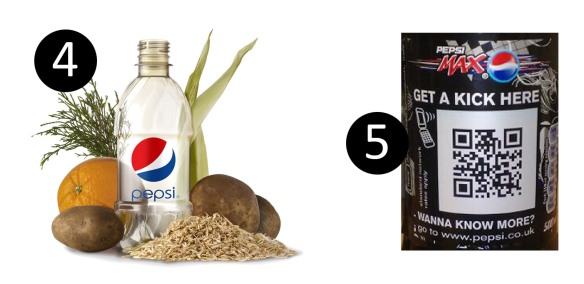Contributed by Hannah Beasley
Simply stated, innovation drives progress. Even if the innovations aren’t your own.
Take a look at these top innovations and trends in packaging that we’ve spotted lately for an instant rejuvenation of your own imagination and your weekly dose of in-the-know.
Innovation: Products Reinvented
1 – Mario Olives has taken a classic garnish and reinvented it as a snack food, brilliantly marketed as snack size – “Packed loose without the juice!” [Packaging World]
2 – Picture a product with packaging so compelling that consumers buy it simply for the packaging. Canned Air, available for sale on Etsy.com for just $4.99 is exactly that. [The Dieline]
The Look: Clean & Simple Package Design
Package Design
3 – Good Co. simply states the idea of Good Coffee & Good Company with a simple and elegant look. [Lovely Package]
4 – Vale Ale sets itself apart by entering the marketplace as a chic and contemporary Australian beer. [The Dieline]
Lead Innovator: PepsiCo
5 – Pepsi’s new 100% plant based bottle is breaking new grounds in the world of sustainable packaging, proving that a label and the package wearing it can both go green. [Greener Package]
6 – QR codes are sweeping the nation, and it’s no surprise that PepsiCo is a thought-leader by implementing QR codes to promote their loyalty programs and drive consumers toward more brand engagement.
Labels, packages, and the world of consumer packaged goods is constantly evolving. So which packaging innovations are shaking the way you do business?
Let’s take a closer look at QR codes and how you can use them effectively on your labels. QR codes are designed to bridge the gap from print to the web, allowing companies to measure and increase consumer engagement. Not sure exactly what this means for you? Here’s our best rundown:
When QR codes are scanned, they take consumers to links on the web – this means you can direct your consumers to additional content that won’t fit directly on the package, or you can send them to a page where they can take an action such as participating in a rewards program. You could also direct them to your social media presence, display a promotional page, or point to a contest entry form. The possibilities are really endless, but the most important thing is to make sure that the landing page is mobile friendly. Since you already know that the page is being visited on a mobile phone, pointing a consumer to your standard desktop-friendly-only webpage is bound to cause frustration and will be highly ineffective.
Still not sure how you can make QR codes work for your label? Find a partner who can help you get started, and use these ideas to begin thinking forward!
- Add a QR code to your paint label that directs consumers to online videos with tips and tricks for painting
- Include a QR code on your distilled spirits bottle and let ambassadors earn rewards for brand loyalty
- Use a QR code on canned goods labels to direct grocery shoppers to online recipes and cooking tips
Be inspired. Be innovative.
Contributed by Hannah Beasley



